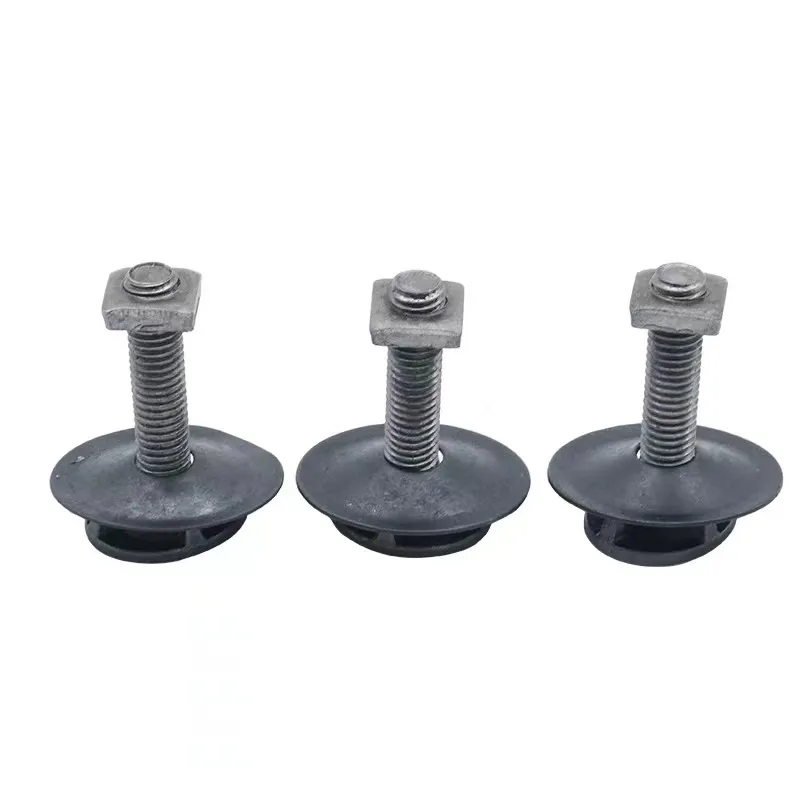

m8 weld stud
Nov . 19, 2024 21:37 Back to list
m8 weld stud
Understanding M8 Weld Studs Applications, Benefits, and Installation
In the realm of fastening and joining technologies, M8 weld studs have carved a niche for themselves due to their versatility and efficiency. These threaded fasteners are designed to be welded onto various substrates, primarily metals, creating a robust and permanent connection that is critical across multiple industries. Understanding the applications, benefits, and installation practices of M8 weld studs is essential for engineers, technicians, and manufacturers looking to optimize their processes.
Applications of M8 Weld Studs
M8 weld studs are utilized in a variety of applications, particularly in sectors where strength and durability are paramount. Common applications include
1. Automotive Industry M8 weld studs are extensively used in vehicle manufacturing for chassis assembly, where they provide secure mounting points for various components. Their ability to bond with high tensile strength is crucial in maintaining the integrity of automotive structures.
2. Construction In the construction industry, weld studs are employed for attaching fixtures, brackets, and supports to steel frames. The use of M8 studs allows for seamless integration into steel structures, enhancing the overall stability and safety of buildings.
3. Aerospace The aerospace sector requires extremely reliable fastening solutions, and M8 weld studs meet these demanding standards. They are frequently used in aircraft assembly, where minimizing weight while ensuring structural integrity is essential.
4. Industrial Machinery M8 weld studs are also common in heavy machinery and equipment manufacturing. They serve as attachment points for various components, ensuring that critical parts remain securely fastened even under rigorous operational conditions.
Benefits of M8 Weld Studs
The adoption of M8 weld studs comes with several advantages
1. High Strength M8 weld studs provide superior strength compared to conventional screws or bolts. Their welding process creates a permanent bond that can withstand significant loads and stresses, making them ideal for critical applications.
m8 weld stud

2. Corrosion Resistance Many M8 weld studs are available in corrosion-resistant materials or coatings, allowing them to be used in harsh environments without degradation. This feature is vital for applications in marine or chemical industries.
3. Time Efficiency The installation of M8 weld studs can be faster than other fastening methods since welding can be performed quickly and does not require pre-drilling holes for threaded fasteners. This efficiency can result in reduced labor costs and shorter project timelines.
4. Low Profile The low-profile design of M8 weld studs reduces the risk of snagging or catching on equipment, making them suitable for applications where space is limited or where the surface needs to remain smooth.
Installation Process
Installing M8 weld studs involves several key steps
1. Surface Preparation The surface where the stud will be welded must be clean, free of rust, and properly prepared to ensure a strong bond.
2. Positioning The stud is positioned at the desired location, and a fixture may be used to hold it in place during welding.
3. Welding The stud is typically welded using methods such as arc welding or resistance welding, depending on the specific requirements of the application and the materials involved.
4. Inspection After welding, it's crucial to inspect the joint for integrity to ensure that the connection will perform as intended.
In conclusion, M8 weld studs are an integral part of modern fastening technology, offering strength, efficiency, and versatility across various industries. By understanding their applications, benefits, and installation methods, professionals can make informed decisions that enhance the durability and performance of their projects.
Latest news
-
Hot Dip Galvanized Bolts-About LongZe|High Strength, Corrosion Resistance
NewsJul.30,2025
-
High-Strength Hot Dip Galvanized Bolts - Hebei Longze | Corrosion Resistance, Customization
NewsJul.30,2025
-
Hot Dip Galvanized Bolts-Hebei Longze|Corrosion Resistance&High Strength
NewsJul.30,2025
-
High-Strength Hot-Dip Galvanized Bolts-Hebei Longze|Corrosion Resistance&High Strength
NewsJul.30,2025
-
Hot Dip Galvanized Bolts-Hebei Longze|Corrosion Resistance&High Strength
NewsJul.30,2025
-
Hot Dip Galvanized Bolts - Hebei Longze | Corrosion Resistance, High Strength
NewsJul.30,2025

